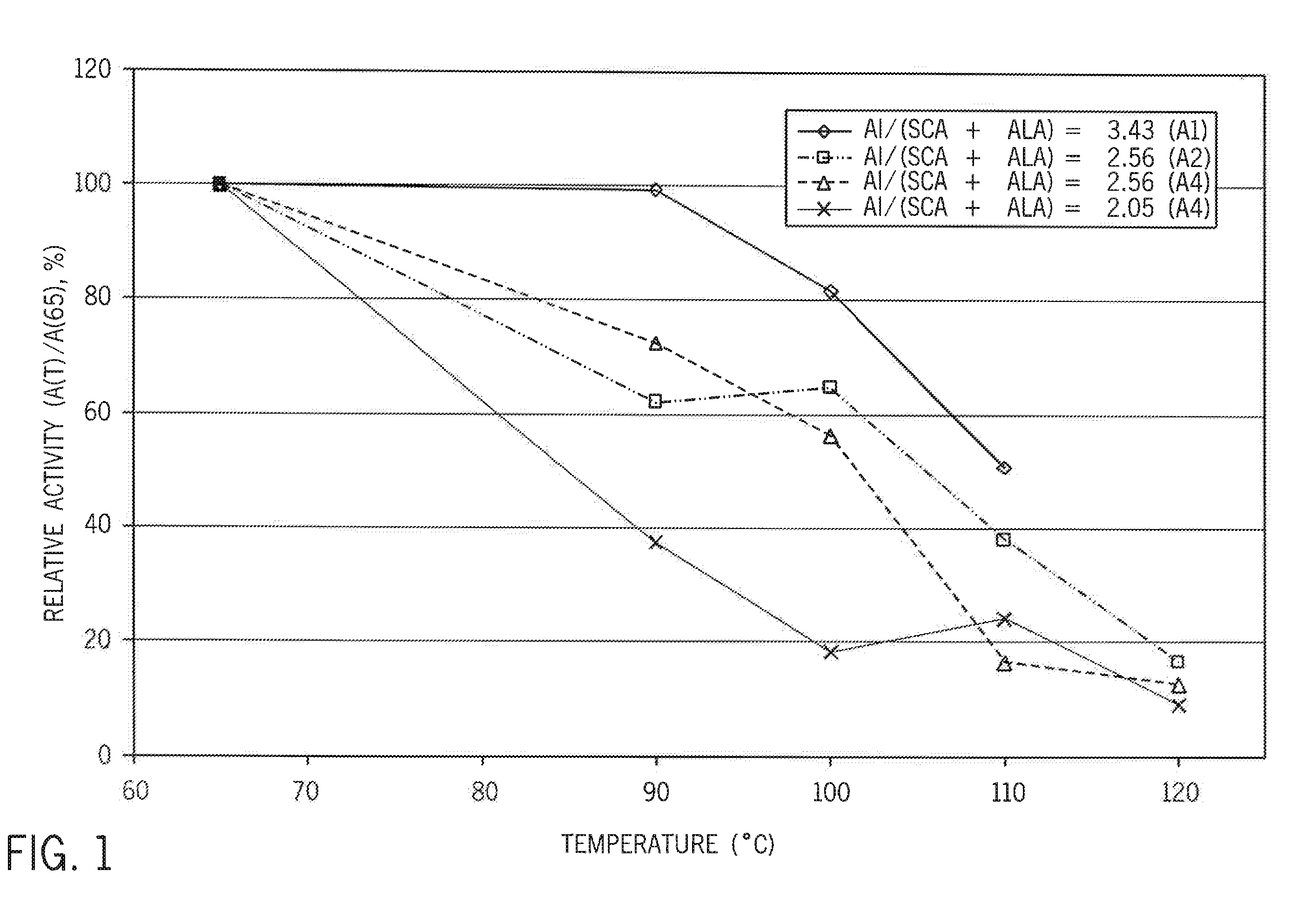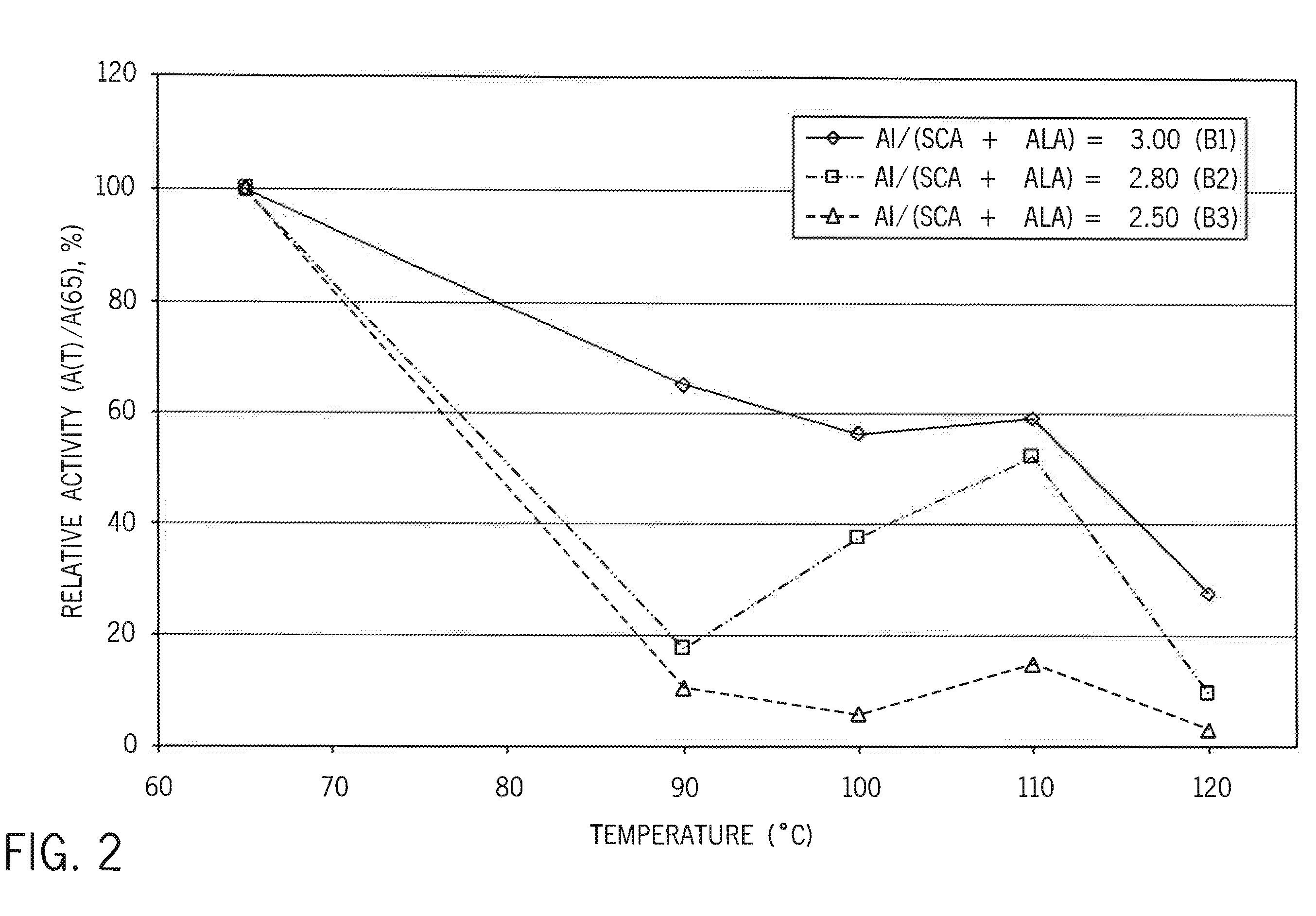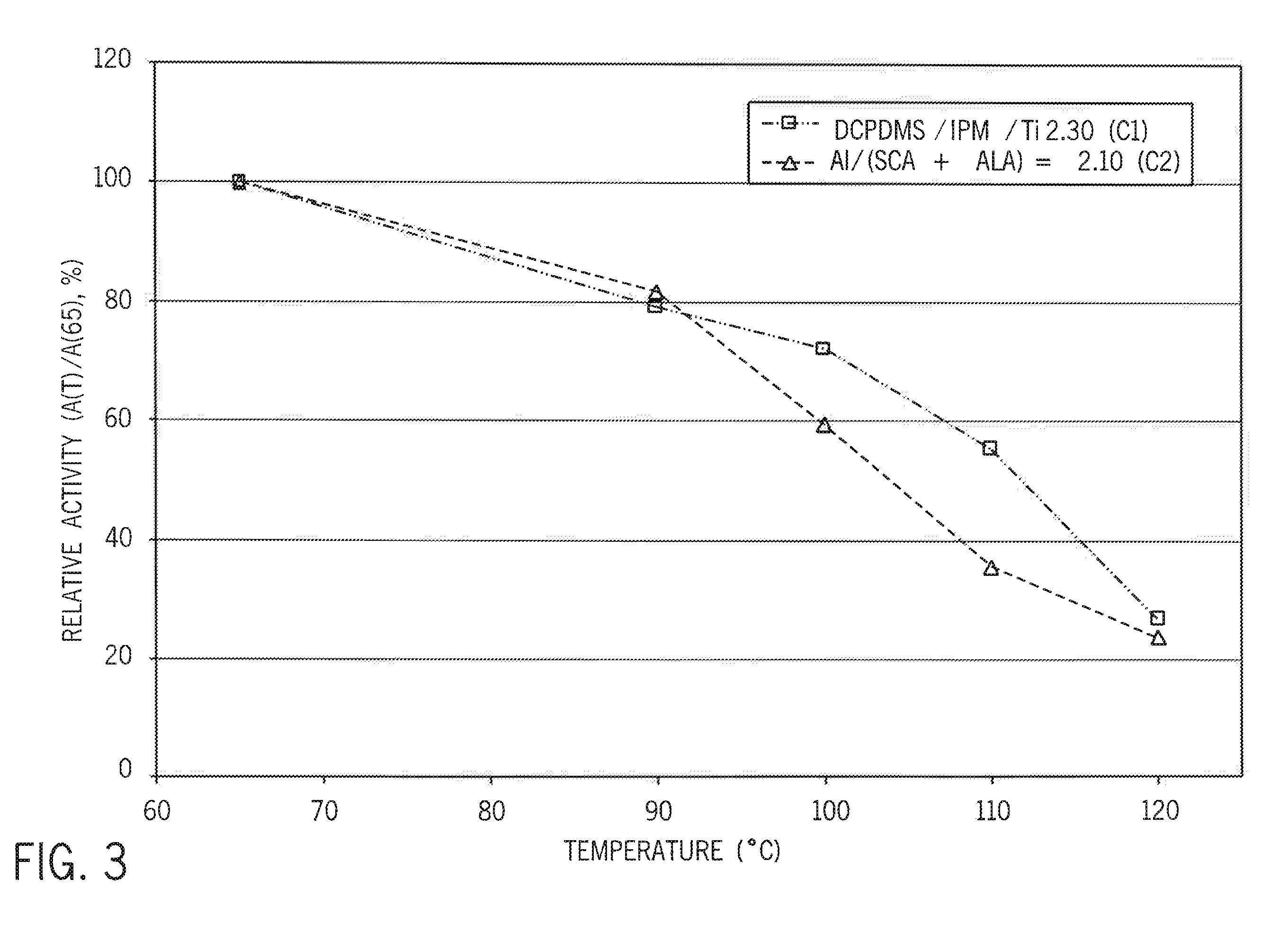Self-Limiting Catalyst System with Controlled Aluminum to SCA Ratio and Method
a self-limiting, aluminum-to-sca technology, applied in the direction of catalyst activation/preparation, organic-compound/hydride/coordination-complex catalyst, physical/chemical process catalyst, etc., can solve the problems of affecting the formation of polymer, so as to improve the composition of the catalyst, reduce the agglomeration of polymer, and reduce the fouling of the reactor
- Summary
- Abstract
- Description
- Claims
- Application Information
AI Technical Summary
Benefits of technology
Problems solved by technology
Method used
Image
Examples
examples
A commercial SHAC™ 320 catalyst was used. Procatalyst A was made according to U.S. Pat. No. 5,093,415. Accordingly, Mg(OEt) 2 was slurried in a 50 / 50 (vol / vol) mixture of TiCl4 / MCB (monochlorobenzene) (20 liter / kilogram Mg(OEt)2) with DIBP (diisobutyl phthalate) (0.3 liter / kilogram Mg(OEt)2). After the mixture was heated at 106° C. for 60 minutes, it was filtered. The resulting moist mass was slurried in a 50 / 50 (by volume) TiCl4 / MCB mixture (20 liter / kilogram Mg(OEt)2) at 106° C. for 30 minutes, filtered, and the process repeated one more time. The resulting solid was rinsed with isopentane and then dried with flowing warm nitrogen. The resulting procatalyst contained 2.5 percent Ti by weight.
Liquid Phase Polymerization in Parallel Polymerization Reactors (PPRs, by Symyx)
Catalyst particle size of the catalyst powder was reduced by stirring the powder with a stir bar for 30-45 minutes.
All SCAs and ALAs were diluted to 0.005 M in Isopar E™, except S-191 which was dissolved in toluen...
PUM
| Property | Measurement | Unit |
|---|---|---|
| molar ratio | aaaaa | aaaaa |
| temperature | aaaaa | aaaaa |
| fluidized bed temperature | aaaaa | aaaaa |
Abstract
Description
Claims
Application Information
 Login to View More
Login to View More - R&D
- Intellectual Property
- Life Sciences
- Materials
- Tech Scout
- Unparalleled Data Quality
- Higher Quality Content
- 60% Fewer Hallucinations
Browse by: Latest US Patents, China's latest patents, Technical Efficacy Thesaurus, Application Domain, Technology Topic, Popular Technical Reports.
© 2025 PatSnap. All rights reserved.Legal|Privacy policy|Modern Slavery Act Transparency Statement|Sitemap|About US| Contact US: help@patsnap.com



